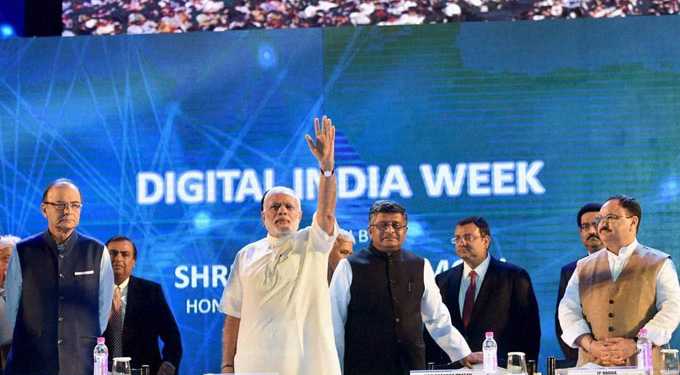The IT sector is the crown jewel of the Indian economy, the 156 billion dollar industry is a highest contributing sector in GDP of the country. This industry is a major source of foreign currency for the country which is heavily dependent on imports. Since the development of IT sector India never faced a balance of payment crisis, it has grown through leap and bounds without any significant government support or intervention. But this sector is facing a slowdown since last two years with a layoff of workers and profits and revenues coming down. The growth trajectory of this sector has been in double-digit for last two decades but it is no longer developing with this speed.
The reasons behind the slowdown were domestic as well as international. The hiring in IT sector was slow because it is increasingly moving to automation to get rid of resources that do mundane and repetitive jobs which were being accredited to Modi’s policy failure. The second reason behind job losses in IT sector was a legacy issue because there has been a lot of recruitment in the previous year without any vacancy. The HR managers recruited unskilled people because they used to get a lot of money from colleges and universities for giving placements. The visa restrictions by countries like the United States and the United Kingdom means the companies could no longer send their employees to these countries for projects. The IT services could not be easily replaced as other goods and services because they require highly skilled labor and expertise. So, at end of the day, the western countries will have to be dependent on Indian companies for efficiency and smooth delivery of IT services.
The Modi government gave a push to digitalization through its Digital India mission and it also supported the development of hardware sector in the country, so it could complement the vast software sector. PM Modi while addressing a meeting at NASSCOM said that the times have changed. Highways are now as important as i-ways—information highways. He lauded the IT sector for its success in building an industry to $146 billion from around $100 million 25 years ago. He further said, ” Technology has become a permanent part of our daily lives through the mobile phone. But then why wasn’t Google made in India”. The government’s push in for growth in domestic IT services has given the companies a lot of opportunities near home. Therefore the companies do not have to depend on exports completely but there is no doubt that the exports will be a major contributor in this sector. The Modi government has not been able to negotiate on easing out the H1-B visa rules despite PM’s good personal relation with Donald Trump. This is a major failure on the part of this government in IT sector.
Despite the slowdown for the small time period the sector is picking up once again. A survey done by Experis IT Manpower Group across the country found that IT companies will be hiring handsomely over the next two quarters. The openings in the IT industry are mainly for pre-trained professionals because now companies do not want to waste their resources on recruiting unskilled graduates and train them. Most of the IT companies told surveyors that they want to hire trained freshers, although there are a number of jobs for experience holders of 1 to 2 years. The government was giving tax breaks to these companies for hiring. The bench strength helped them in getting lucrative projects abroad as well as in the country. There has been also a tremendous boost in digital infrastructure. While the target of BharatNet is to connect 2.5 lakh gram panchayats with an optical fiber network, as many as 90,966 have already been linked. This was achieved by laying 2, 05,404 km of optical fiber cable in the last three years.


































